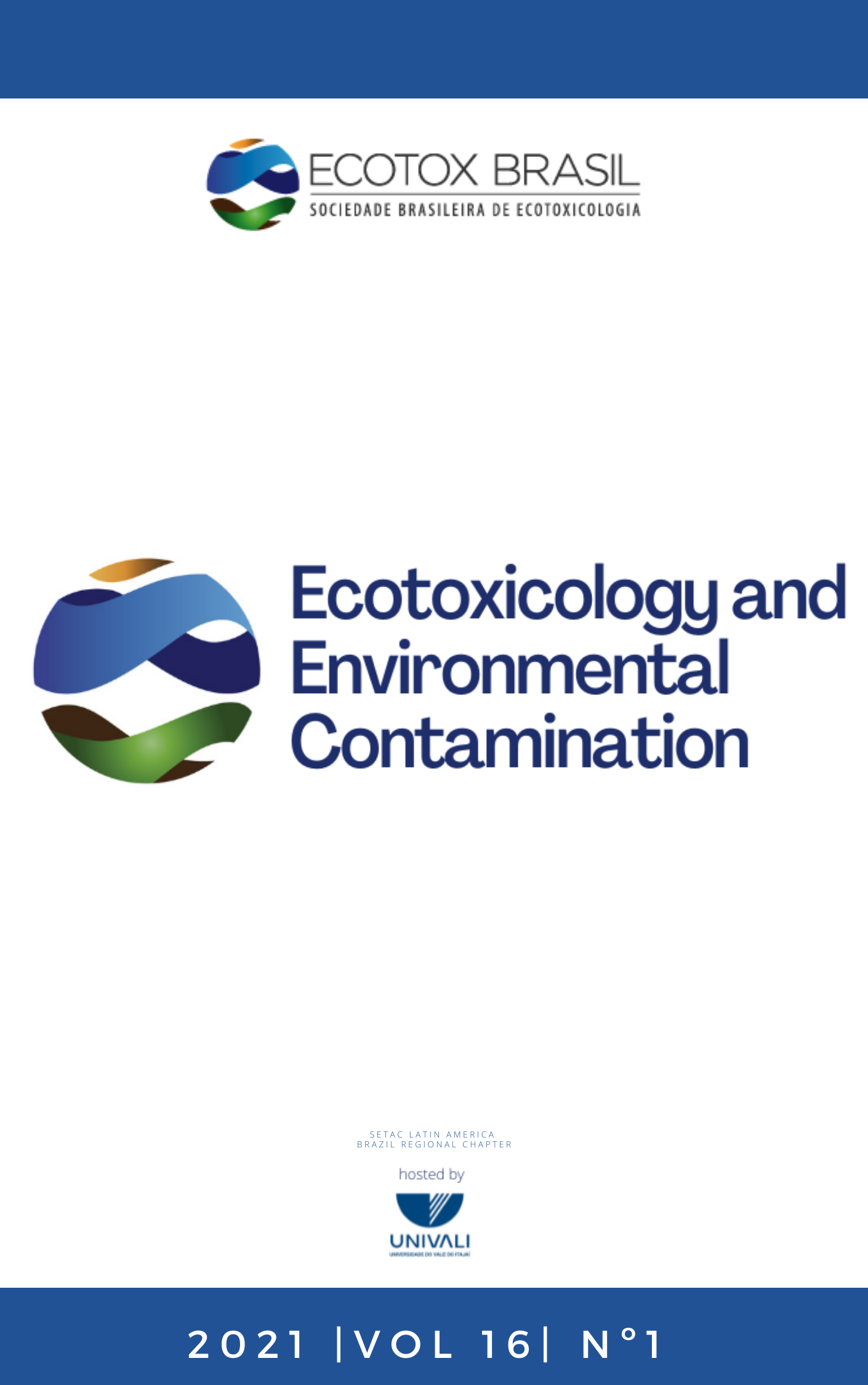Copper affect the multixenobiotic resistance mechanism (MXR) in embryo and larvae of Rhamdia quelen
DOI:
https://doi.org/10.5132/eec.2021.01.08Abstract
P-glycoproteins (P-gp) and Multidrug resistance protein (MRP) represent a family of ABC (ATP-binding cassette) transporters responsible for multixenobiotic resistance mechanism (MXR) in aquatic organisms. In the current study the modulation of P-gp and MRP proteins was evaluated in embryo and larvae of Rhamdia quelen fish species exposed to copper. Adult females were exposed by gavage during 60 days to copper (5 mg Cu kg-1) and eggs, embryos, and larvae from exposed and unexposed females were exposed to 30 mg Cu L-1. The activity of ABC transporters was accessed via calcein accumulation assay using the specific inhibitors: Verapamil (P-gp) and MK571 (MRP). P-gp activity was detected in all analyzed stages whereas MRP activity was observed after 36 and 96 hpf. Oocytes from females previously exposed and larvae stages (36 and 96 hpf) accumulated less calcein than no exposed oocytes, showing higher ABC transporters activity. In individuals exposed to copper, a higher inhibitory effect was observed 1 hpf. The modulation of ABC transporter proteins is time dependent throughout the development, and the initial stages are more sensible to copper. These findings highlight the MXR mechanism as a biomarker of pollutant exposure in early stages of development of R. quelen.Downloads
Downloads
Published
How to Cite
Issue
Section
License
Copyright (c) 2021 Ecotoxicology and Environmental Contamination

This work is licensed under a Creative Commons Attribution 4.0 International License.
Copyright © 2006 ECOTOX-Brasil
Copyright notice: It is a condition for publication that manuscripts submitted to this journal have not yet been published and will not be simultaneously submitted or published elsewhere. By submitting a manuscript, the authors agree that copyright for their article is transferred to the Sociedade Brasileira de Ecotoxicologia (ECOTOX-Brasil) if and when the article is accepted for publication. The copyright covers the exclusive rights to reproduce and distribute articles, including reprints, photographic reproductions or any other reproduction of a similar nature, including translations. No part of this publication may be reproduced, stored in a retrieval system or transmitted in any form or by any means, electronic, mechanical, photocopying, recording or otherwise, without permission of the publisher.
Notice: While every effort is made by the EEC, editors and editorial board to see that no inaccurate or misleading data, opinions or statements appear in this journal, they wish to make it clear that the contents of the articles and advertisements published herein are the sole responsibility of the contributors or advertisers concerned. Accordingly, the EEC, the editorial board and editors and their respective employees, officers and agents accept no responsibility or liability whatsoever for the consequences of any inaccurate or misleading data, opinion or statement.




